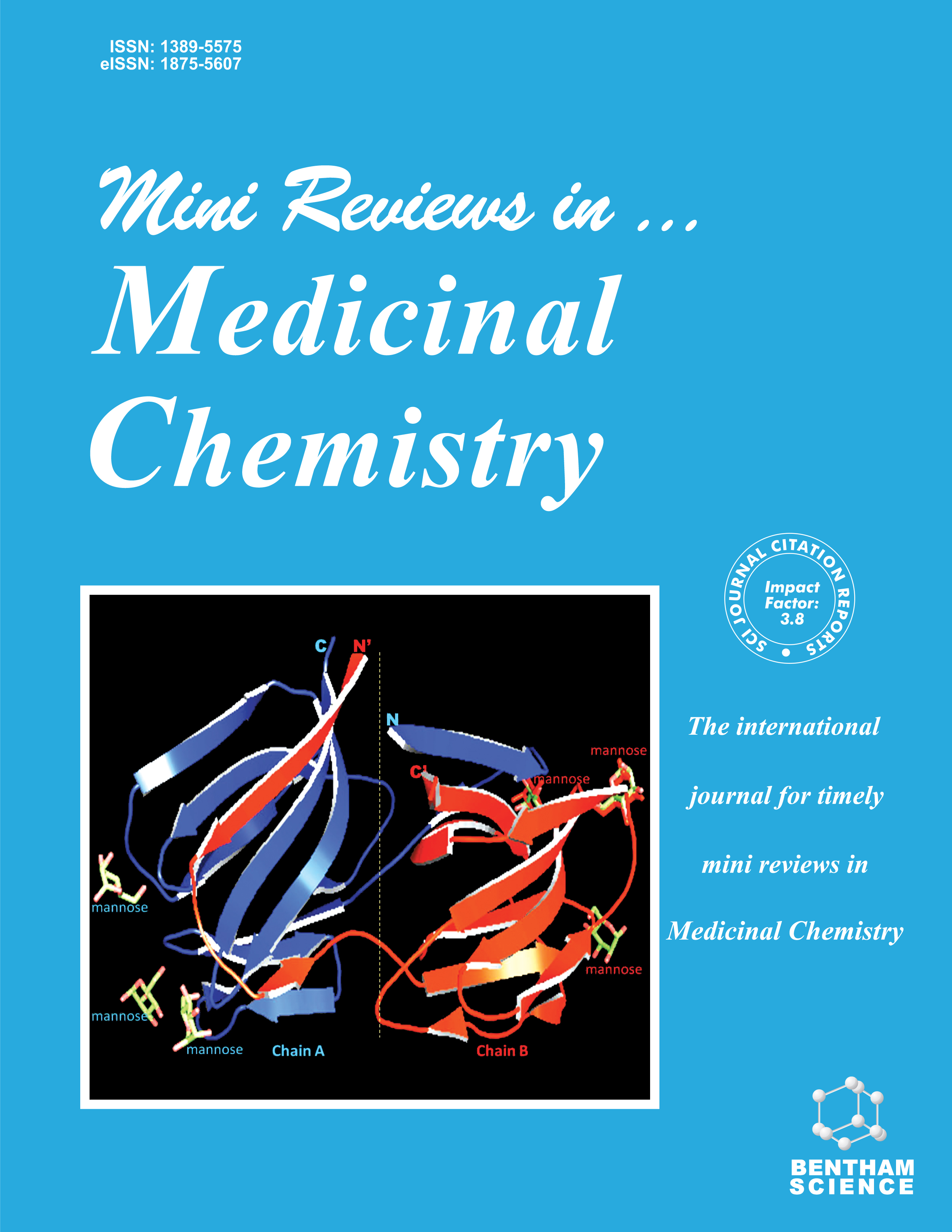- Home
- A-Z Publications
- Mini Reviews in Medicinal Chemistry
- Previous Issues
- Volume 17, Issue 2, 2017
Mini Reviews in Medicinal Chemistry - Volume 17, Issue 2, 2017
Volume 17, Issue 2, 2017
-
-
The Influence of Co-Ligands on Improving Tumor Targeting of 99mTc-HYNIC Conjugated Peptides
More LessAuthors: Seyedeh Atekeh Torabizadeh and Seyed Jalal HosseinimehrTechnetium-99m (99mTc) is widely used as a radionuclide for labeling of biomolecules in nuclear medicine practice. 6-hydrazinopyridine-3-carboxylic acid namely HYNIC is one of the best bifunctional chelating agents for attachment of 99mTc to the biomolecules such as peptides and proteins. Since HYNIC can only occupy one or two coordination sites of 99mTc, co-ligands are needed to complete the coordination sphe Read More
-
-
-
α2 Adrenoceptor: a Target for Neuropathic Pain Treatment
More LessNeuropathic pain is originated from different alterations of the nervous system. The difficulty of treatment strongly impairs quality of life of affected people. It is associated with severe, chronic sensory disturbances characterized by spontaneous pain, increased responsiveness to painful stimuli and pain perceived in response to normally non-noxious stimuli. The underlying mechanisms are complex and involve both peripheral a Read More
-
-
-
Moraceae Plants with Tyrosinase Inhibitory Activity: A Review
More LessAuthors: Bruno Burlando, Marco Clericuzio and Laura CornaraHyperpigmentation is an abnormal darkening of the skin mostly derived from excessive melanin production. It is typical of skin disorders including melasma associated to pregnancy or age, freckles, sun freckles and photoaging, age spots, and actinic keratosis. These conditions can be uncomfortable for aesthetic reasons and specific depigmenting treatment is frequently requested. Tyrosinase (EC 1.14.18.1) is the rate-l Read More
-
-
-
New Progress in Azole Compounds as Antimicrobial Agents
More LessAuthors: Hui-Zhen Zhang, Lin-Ling Gan, Hui Wang and Cheng-He ZhouThe increasing incidence of microbial resistance and newly emerging pathogens have become a serious challenge for public health. More and more efforts have been directed to the development of new antimicrobial agents with distinct mechanisms from the well-known classes of clinical drugs. The extensive clinical utilization of azole-based medicinal drugs has evoked numerous attentions, and their researches and development Read More
-
-
-
An Overview of Phytotherapeutic Approaches for the Treatment of Tuberculosis
More LessAuthors: Dushyant Sharma and Jaya Parkash YadavTuberculosis (TB) is highly infectious disease causing morbidity and death. Its causative organism is a contagious bacterium, Mycobacterium tuberculosis. The incidence of tuberculosis is increasing worldwide due to the emergence of drug resistance bacteria. The resistance is being developed in Mycobacterium tuberculosis against both the first line as well as the second line drugs used for the treatment. The tubercul Read More
-
Volumes & issues
-
Volume 25 (2025)
-
Volume 24 (2024)
-
Volume 23 (2023)
-
Volume 22 (2022)
-
Volume 21 (2021)
-
Volume 20 (2020)
-
Volume 19 (2019)
-
Volume 18 (2018)
-
Volume 17 (2017)
-
Volume 16 (2016)
-
Volume 15 (2015)
-
Volume 14 (2014)
-
Volume 13 (2013)
-
Volume 12 (2012)
-
Volume 11 (2011)
-
Volume 10 (2010)
-
Volume 9 (2009)
-
Volume 8 (2008)
-
Volume 7 (2007)
-
Volume 6 (2006)
-
Volume 5 (2005)
-
Volume 4 (2004)
-
Volume 3 (2003)
-
Volume 2 (2002)
-
Volume 1 (2001)
Most Read This Month
Article
content/journals/mrmc
Journal
10
5
false
en


